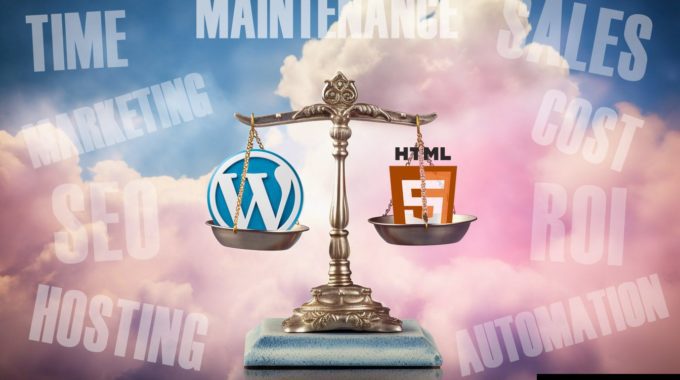In the realm of industrial marketing, where relationships and personalized solutions reign supreme, the adoption…

Moonshot Thinking & the Age of Innovation
Wed, 03/09/2016 – by Kaylie Duffy, Associate Editor, @kaylieannduffy
This blog originally appeared in the March 2016 issue of Product Design & Development.
 The media often portrays the present world as a war-torn planet on its way to self-destruction. Images of poverty, disease, violence, and civil unrest often fill our T.V. screens when we turn on the nightly news.
The media often portrays the present world as a war-torn planet on its way to self-destruction. Images of poverty, disease, violence, and civil unrest often fill our T.V. screens when we turn on the nightly news.
With all the negative imagery we see on a daily basis, it may come as a surprise to find out that the Earth and its inhabitants are actually getting progressively healthier, safer, and more educated.
Peter Diamandis, XPrize Foundation CEO, reiterated this point throughout his keynote speech at SolidWorks World 2016 in early February.
A multitude of students, engineers, designers, and hobbyists crowded into the Kay Bailey Hutchison Convention Center in downtown Dallas to hear the engineer, physician, and entrepreneur explain how technology is turning areas of scarcity into abundance.
“It’s my pleasure to talk about the implications of exponential technologies, and the realization that in this room are sitting the minds that are going to be creating the future,” began Diamandis.
He explained that the news media preferentially feeds its viewers negative stories, because that is what most minds pay attention to. In fact, an ancient sliver of the temporal lobe called the amygdala acts as an early warning detector. It scans everything humans hear and see for anything that may be harmful.
So, given the array of news stories watched and read throughout the day, most individuals will preferentially focus on the negative news. But according to data presented by Diamandis, the world is actually in an extraordinary place.
“Over the last 100 years, the per capita income for every nation on this planet has more than tripled,” explained Diamandis. “The human lifespan has more than doubled, the cost of food has dropped 13-fold, energy has dropped 20-fold, transportation [has dropped] hundreds-of-folds, and communication [has dropped] thousands-of-folds.”
Therefore, if we take the time to examine the numerical evidence for abundance, it is quite incredible.
Peter Diamandis. Image credit: SolidWorks
Diamandis presented a number of graphs throughout his keynote, explaining that airplane accidents are almost nonexistent, while automobile-related deaths are reducing yearly. Another eye-opening graph showed how the annual global death rate due to natural disasters is declining.
“Look how this has dropped as we’ve put assets into space to view the Earth; as we’ve gotten better sensors and networks with the ability to actually predict natural disasters before they happen and get help to individuals in that golden hour,” said Diamandis.
Why is this happening? Why are we creating this extraordinary world of abundance?
According to the XPrize CEO, it’s a direct result of the exponential technologies we’re creating and the financial ease of creating startups in the present day.
“Back in 2000, the cost of the bandwidth, the servers, the software, the people was $5 million dollars to get a startup going,” mused Diamandis. “Today after [Amazon Web Services], after open source, we’re down to $5,000.”
Because the former prohibitive cost of launching a startup has dramatically dropped, the number of entrepreneurs, engineers, and innovators creating the technology of the future is radically increasing. Plus, the bright minds of today are using better tools to build better tools, which in turn build better tools.
In 2010, the average thousand-dollar computer was running at about 100 billion (1011) calculations per second, which is more computational power than the entire U.S. space program had in the 1960s and ‘70s. However, seven years from now in 2023, the average thousand-dollar computer will run at 1016 calculations per second.
View more: Top 5 from SolidWorks World 2016
“[That’s] just a number. Unless you speak to a neurophysiologist, who says, ‘That’s the rate at which your brain and my brain does pattern recognition,’” said Diamandis. “Twenty-five years later, now a thousand bucks buys you the computational power of the entire human race.”
The point that Diamandis was making is that faster, cheaper computational power is the bedrock on top of which the Internet of Things, robotics, 3D printing, synthetic biology, artificial intelligence (AI), and a variety of other technologies are progressing.
In addition, the planet now has more connected individuals than ever before.
“[The planet’s population] just crossed the seven billion mark. We’re on a rampage to make people healthier and better educated,” explained Diamandis. “Back in 2010, we had 1.8 billion people connected on planet Earth. Today, we’re about 2.9 billion. The low estimate by 2020 is that we’ll go to 5 billion connected minds.”
The 5 billion new minds coming online will lead to a massive increase in innovation, representing tens of trillions of dollars flowing into the global economy. Due to the abundance of improved technology and increased connectivity, Diamandis believes that we can take part in moonshot thinking.
“Today, you have the ability to be audacious… to take your grandest dreams and make them true,” he mused. “Moonshot thinking is the ability to go ten times bigger, rather than ten percent bigger.”
Startups can now start with a clean sheet of paper, using the best design tools, the best robotics, the best AI, and the best materials. And when you approach a project with this clean sheet of paper, you can create a product that is ten times better.
“Today any of us who wants to solve a problem – to use the tools of design to take what’s in your mind and manifest it – can,” explained Diamandis. “We’re living during the most extraordinary time in human history.”
Email [email protected].
Kaylie Duffy
Associate Editor




